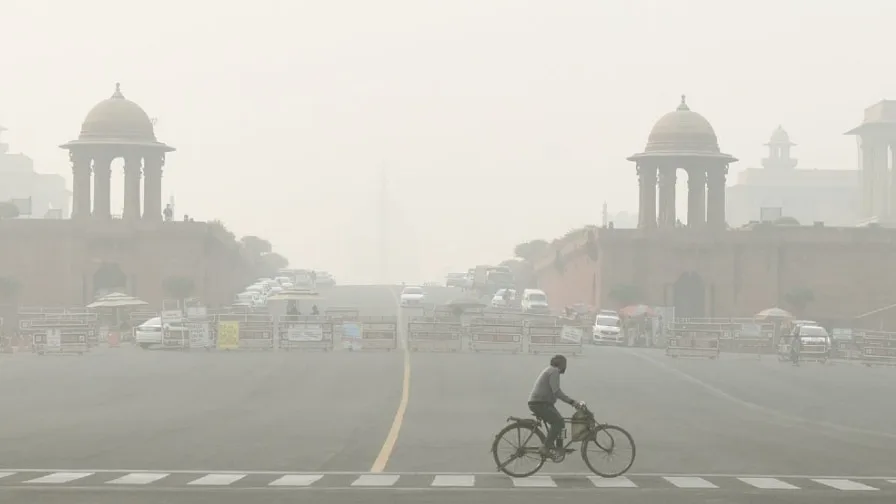Gopal Rai, the minister of environment in Delhi, declared on Monday that the odd-even rule will be in force in the nation’s capital from November 13 to November 20. He announced that all schools will be closed until November 10th due to the worsening air quality, with the exception of pupils in grades 10 and 12. Along with a moratorium on building operations in the city, the statement also restricted the admission of BS3 gasoline and BS4 diesel cars into Delhi.

Table of Contents
“Decoding Delhi’s Odd-Even Traffic Rule A Date-Based Vehicle Restriction Strategy”
A traffic control strategy called the “odd-even scheme” limits vehicle use by using the last number on registration plates. On odd dates, vehicles with the numbers 1, 3, 5, 7, and 9 are permitted to be driven, whereas vehicles with the numbers 0, 2, 4, 6, and 8 are permitted to drive on even dates.
“Delhi Reinstates Odd-Even Traffic Plan Post-Diwali: A Step to Tackle Rising Air Pollution”
Following a high-level meeting that Chief Minister Arvind Kejriwal of Delhi attended, Minister Gopal Rai made his announcement. The group resolved to restore the Odd-Even Road Traffic Management System (also known as the Controversial Odd-Even Road Traffic Management System) in response to the growing air pollution levels in the city after Diwali.

In addition to enforcing the odd-even rule, the Delhi administration deliberated on the necessity of virtual learning for children enrolled in grades 6 through 12, as well as the closure of elementary schools until November 10. This action was taken to lessen the negative effects that the city’s deteriorating air quality would have on people’s health and safety, particularly on kids.
Reducing the causes of air pollution is the goal of the decision to stop construction-related activities and restrict the admission of BS3 gasoline and BS4 diesel cars into the city. These kinds of steps are taken to mitigate the severe air pollution that Delhi has been dealing with for a long time.
Delhi has occasionally used the odd-even approach to solve the problem of air pollution. It is a component of a larger plan to control traffic and lower emissions, particularly during periods of high pollution.
“Delhi’s Air Quality Deteriorates to ‘Severe’: Gopal Rai Announces Odd-Even Plan”
Gopal Rai made the remark recently, and this coincides with Delhi’s air quality rating being upgraded to “Severe” due to a major decline. On Monday morning, the Central Pollution Control Board (CPCB) reported the city’s overall Air Quality Index (AQI) to be 437. The majority of Delhi’s monitoring stations recorded AQI readings of 400 or above, designating the state of the air as “Severe.”
The Graded Response Action Plan (GRAP) is one of the several strategies the Delhi government has been using to address air pollution. In the last stage of GRAP, it is suggested that fifty percent of workers in private and public offices work from home. It also includes a total prohibition on construction operations, including public projects, and limits on truck access (apart from necessary services).
“GRAP Phase IV: Delhi’s Response to Severe Air Quality – Odd-Even Rule and More”
When the AQI above 450 for three days in a row, state governments may be able to consider closing colleges and other educational facilities and implementing emergency measures, such as the odd-even rule, to address air pollution. This is made possible by the introduction of GRAP Phase IV. On the other hand, aggressive enforcement was not possible this time.

The odd-even rule is one measure used to reduce pollution, but it’s important to remember that there are many different causes of pollution in Delhi, including construction dust, industrial pollutants, car emissions, and crop burning in nearby states. The administration is working to find a comprehensive solution to these problems.
There has long been worry about how vehicle emissions affect Delh dirty air. Although the admission of BS3 and BS4 cars into the city was prohibited, the odd-even rule has recently been reinstated in an effort to further control traffic on Delhi’s roadways. This is being perceived as an attempt to lower vehicle emissions, which are a major cause of the pollution levels in the city.
“Delhi’s Double Strategy: Odd-Even Rule Returns Alongside Road Rationing Scheme for Cleaner Air and Less Traffic”
Furthermore, the Odd-Even Rule is being reinstated at the same time that the Road Rationing Scheme (also known as the Rationing System) goes into effect on November 12. This plan will increase the city’s traffic control by one tier, which should help lower pollution and traffic.
In conclusion, the severity of the air pollution issue in the nation’s capital is demonstrated by the Delhi government’s determination to impose the odd-even rule in addition to other initiatives like limiting the admission of specific cars and pausing building. These steps are intended to lessen the direct effects of air pollution on Delhi people’ health and wellbeing, particularly after the holiday season. Long-term solutions to air pollution, however, would need consistent work to address different sources of pollution and encourage greener, more sustainable habits throughout the city.

2 thoughts on “Delhi Odd-Even Traffic Rule Returns : from Nov 13-20, School Classes Up to Grade 10 and 12 Temporarily Shut Until Friday”